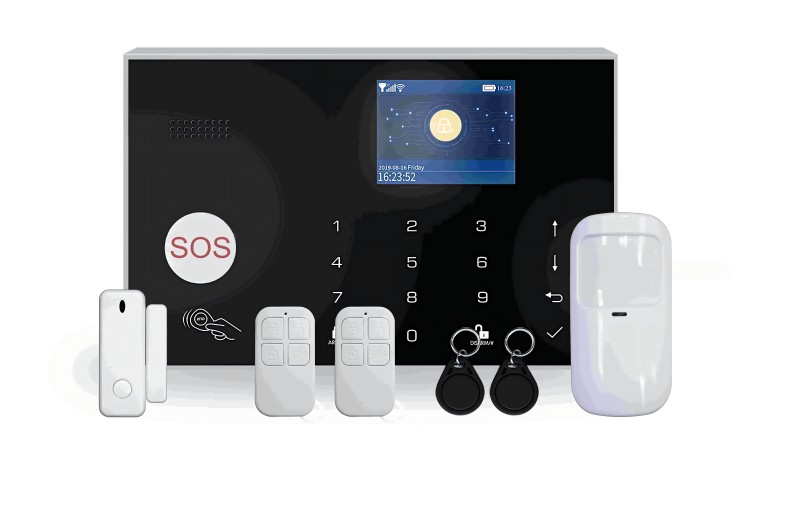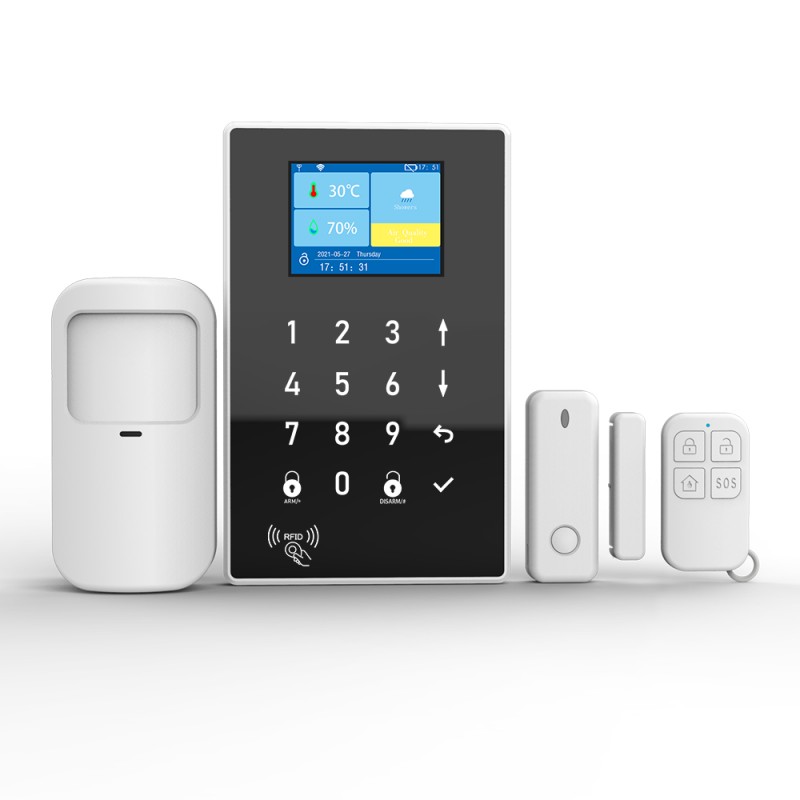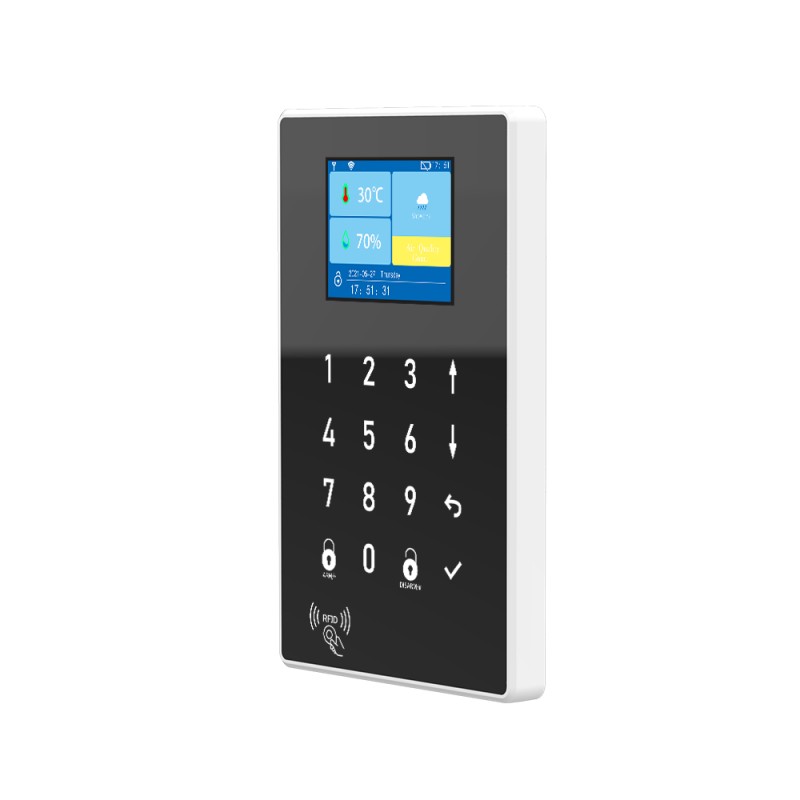How Do GSM & WiFi Alarms Integrate with Smart Home Devices?
Integrating GSM & WiFi alarm systems with smart home devices is transforming security into a seamless, intelligent solution for homeowners and businesses. This capability allows users to control security measures remotely, receive instant alerts, and connect multiple devices to create a comprehensive home automation experience. In this article, we’ll explore how GSM & WiFi alarms work with smart home systems, the types of devices they integrate with, and the benefits of this connection for enhanced security and convenience.

1. The Mechanics of GSM & WiFi Alarms in Smart Homes
GSM (Global System for Mobile Communications) and WiFi alarms both serve as reliable communication methods in smart home security. A GSM alarm system relies on cellular networks to send signals to users or monitoring centers, while a WiFi alarm connects directly to the home’s internet. When integrated with smart home systems, both types enable users to control security settings, receive real-time alerts, and monitor their property from anywhere. Through mobile apps, GSM and WiFi alarms can interact with other smart devices, such as cameras, lights, and door locks, creating a synchronized security ecosystem.
By leveraging these wireless technologies, GSM & WiFi alarms offer uninterrupted communication and give users more control over home security, even when away from the property. This ability to remotely monitor and manage security settings brings convenience and a greater sense of peace to users, who can customize their smart home environment with ease.
2. Key Devices GSM & WiFi Alarms Connect With
The integration of GSM & WiFi alarms extends beyond simple door and window sensors to a variety of smart home devices. Some key devices that work seamlessly with these alarms include:
- Smart Cameras: Connected cameras allow users to visually verify alarms in real time. Through app-based integrations, users can instantly view live feeds or recorded footage when an alarm is triggered.
- Smart Door Locks: Integration with smart locks enables users to lock or unlock doors remotely. When the alarm system is armed, it can automatically lock doors, adding an extra layer of security.
- Smart Lighting: Some alarm systems connect with smart lighting, allowing lights to turn on automatically if an alarm is activated, deterring potential intruders.
- Environmental Sensors: Sensors for smoke, gas, or water leaks can be part of the alarm network, providing comprehensive coverage against various household risks beyond break-ins.
By connecting with these smart devices, GSM & WiFi alarm systems ensure that every aspect of security is automated and accessible to users, supporting a holistic approach to home protection.
3. Advantages of Smart Home Integration for Alarm Systems
Integrating GSM & WiFi alarms with smart home devices offers numerous advantages, enhancing security and convenience.
- Real-Time Alerts: Users receive immediate notifications via SMS, push notifications, or emails when any suspicious activity is detected. The added advantage of linking these alerts to smart cameras or lights allows users to assess and respond quickly.
- Remote Control and Monitoring: Through mobile apps, users can manage security settings, activate or deactivate alarms, and check live feeds remotely. This feature is particularly useful for busy professionals, frequent travelers, or families who want to keep an eye on their property from anywhere.
- Enhanced Deterrence: The integration of alarm systems with smart lights or sirens can discourage potential intruders. When the alarm triggers, it can activate lights and sounds, creating a stronger deterrent effect.
- Energy Efficiency: Smart integration allows users to automate security in a way that also conserves energy. For example, users can set smart thermostats to adjust temperature based on occupancy, or use smart lights that only turn on when the alarm is triggered.
These advantages make GSM & WiFi alarms a valuable addition to smart homes, optimizing both security and efficiency for a more controlled living environment.

4. How Compatibility and Communication Standards Affect Integration
For successful integration, GSM & WiFi alarms must be compatible with the smart home ecosystem in use, typically achieved through open standards like Z-Wave, Zigbee, or WiFi protocols. Many alarm systems come pre-equipped with compatible software, but some may require an external hub to bridge different protocols.
- Z-Wave and Zigbee Compatibility: These are popular wireless protocols that enable communication between different smart home devices. If a GSM or WiFi alarm is compatible with Z-Wave or Zigbee, it can connect to a wide array of smart devices without additional hardware.
- WiFi and Bluetooth Connections: Many alarms also use WiFi or Bluetooth for straightforward integration with mobile apps, making them easy to set up and manage for users new to smart home technology.
- Smart Home Hubs: Some users rely on hubs like Amazon Alexa, Google Home, or Apple HomeKit, which serve as centralized control points for all connected devices. GSM & WiFi alarms compatible with these platforms allow seamless control from a single app, enhancing the user experience.
Understanding these communication standards helps users choose alarm systems that work best with their current setup, ensuring a smooth and effective integration process.

5. Privacy and Security in Smart Home Alarm Integration
As smart home technology becomes more interconnected, data security and privacy concerns are increasingly relevant. When integrating GSM & WiFi alarms, it’s crucial to consider features like encrypted data transmission, regular firmware updates, and two-factor authentication to safeguard against hacking.
- Encryption: Secure encryption protocols prevent unauthorized access to the alarm system and any connected devices.
- Firmware Updates: Regular updates help protect the system from vulnerabilities and ensure compatibility with other devices.
- User Authentication: Two-factor authentication provides an added layer of security, requiring additional verification before allowing access to the alarm system.
Selecting alarm systems that prioritize these security measures is essential for distributors and end-users alike, ensuring that the integrated system is not only effective but also secure.
6. Choosing the Right GSM & WiFi Alarm for Smart Home Integration
For distributors, understanding the compatibility and flexibility of GSM & WiFi alarms with smart home ecosystems is key to meeting customer needs. Look for systems that offer:
- High Compatibility: Alarms that support a wide range of protocols, including Z-Wave, Zigbee, and WiFi, to accommodate various smart devices.
- Ease of Use: Systems with intuitive mobile apps and simple installation processes make integration accessible to a wider audience.
- Reliable Customer Support: Support for troubleshooting integration issues is important for distributors who want to ensure smooth user experiences.
By selecting alarm systems that align with current smart home trends and preferences, distributors can provide more value to their customers, making smart home security both accessible and highly functional.
GSM & WiFi alarms integrated with smart home devices provide a flexible and powerful security solution, offering real-time monitoring, automated deterrence, and remote control capabilities. For distributors, understanding these integration benefits helps cater to the growing demand for smart, connected security solutions. By choosing compatible, user-friendly, and secure GSM & WiFi alarms, distributors can offer comprehensive solutions that meet the needs of today’s tech-savvy customers, positioning them at the forefront of smart home security trends.
gsm & wifi security system smart home security system gsm alarm system
 简体中文
简体中文
